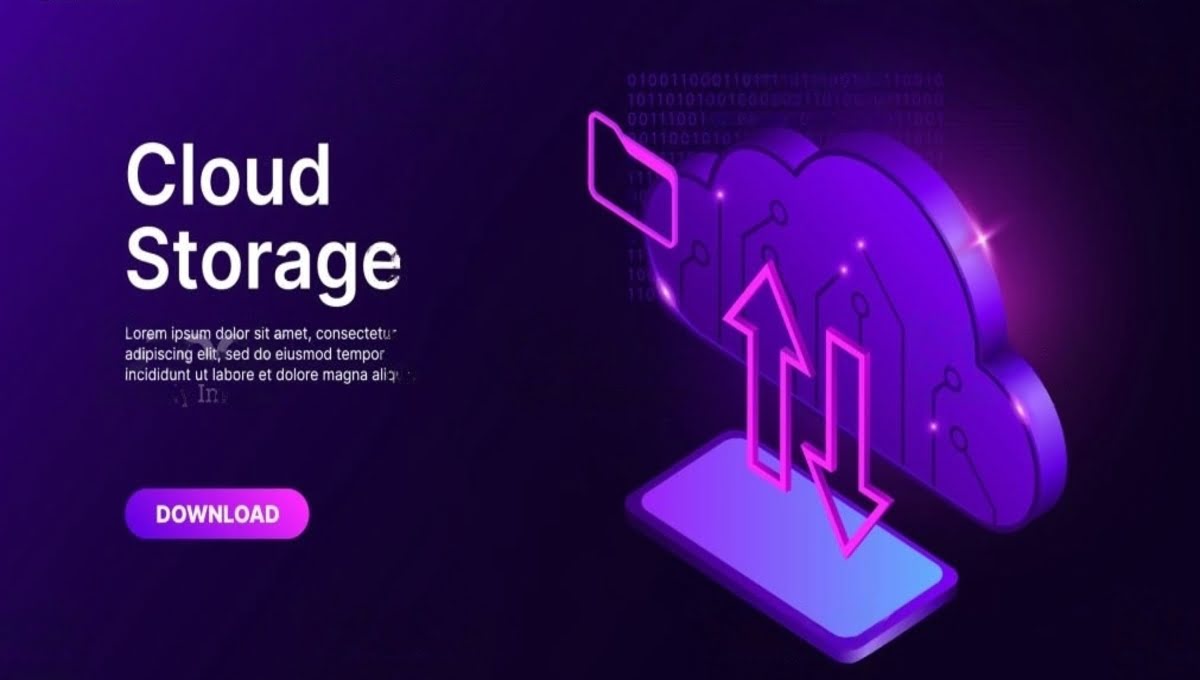MULTICLOUDS
What is Multi Cloud : Your Ultimate Guide

The phrase “multi-cloud” is gaining popularity in the age of cloud computing, when data governs the digital environment. What is multi-cloud, exactly, and why should you care? Imagine yourself in an ice cream shop, surrounded by a wide variety of flavors, each of which offers a different taste sensation. Multi-cloud is similar to that in that it gives you access to a wide range of cloud services. In this article, we’ll delve into the mouthwatering specifics of multi-cloud, providing you with a mouthwatering understanding free of technical lingo.
1. Understanding Multi-Cloud
What is multi-cloud?
Multi-cloud computing is a cloud computing approach that involves using services from multiple cloud providers to meet specific business needs. Rather than relying solely on one cloud platform, organizations can distribute their workloads across different cloud environments. This diversification mitigates risks and enhances overall performance.
Differentiating Multi-Cloud from Hybrid Cloud
It’s essential to distinguish multi-cloud from hybrid clouds. While multi-cloud uses multiple public or private cloud services independently, hybrid cloud combines on-premises infrastructure with a single cloud provider. Multi-cloud offers more flexibility, as it allows businesses to mix and match cloud services based on their requirements.
| Characteristic | Multi-cloud | Hybrid cloud |
|---|---|---|
| Types of clouds | Public only | Public and private |
| Architecture | Typically decentralized | Typically centralized |
| Management | Managed by multiple cloud providers | Managed by the organization |
| Data location | Data can be stored and processed in any of the public clouds | Data can be stored and processed in the public cloud, private cloud, or on-premises |
| Use cases | It is good for organizations that need to access a wide range of cloud services or that want to avoid vendor lock-in | It is good for organizations that have sensitive data that needs to be kept on-premises or that have specific compliance requirements |
2. Why Do We Need Multi-Cloud?
Think about it. Would you want to be limited to just one ice cream flavor for the rest of your life? Similarly, relying on a single cloud provider can be limiting. Multi-cloud offers diversity, giving you the flexibility to choose the best tools and services from various providers, depending on your specific needs.
3. How Does Multi-Cloud Work?
Imagine you want vanilla ice cream, but one shop offers a creamier version while another provides a more affordable one. Multi-cloud allows you to mix and match cloud services, selecting the best features from different providers. It’s like building a customized ice cream cone with your favorite flavors and toppings.
4. Benefits of Multi-Cloud
- Flexibility: With multi-cloud, you’re not tied to one provider’s offerings. You can adapt to changing requirements seamlessly.
- Redundancy: If one cloud provider has a meltdown (much like a melted ice cream cone), you can switch to another without disruption.
- Cost-Efficiency: It’s like finding a place where ice cream is always on sale. You can optimize costs by selecting the most cost-effective services.
- Innovation: Just as new ice cream flavors emerge, cloud providers constantly introduce new features. Multi-cloud allows you to stay ahead of the latest innovations.
5. Challenges of Multi-Cloud
Like trying to eat ice cream on a hot summer day, multi-cloud comes with its own challenges.
- Complexity: Managing multiple cloud providers can be like juggling several ice cream cones—tricky!
- Integration: Ensuring all your flavors (or cloud services) work together seamlessly can be a bit of a brain freeze.
- Security: Keeping your ice cream from melting (data security) across multiple providers is a top priority.
6. Best Practices for Multi-Cloud Adoption
Here are some tips to savor the multi-cloud experience:
- Plan Ahead: Just as you’d plan your ice cream flavors, plan your cloud strategy.
- Standardize Where Possible: Choose common tools and practices across providers to simplify management.
- Security First: Protect your data like it’s your favorite ice cream flavor—with care.
- Monitoring and Optimization: Keep an eye on costs and performance, like choosing the right ice cream scoop.
7. Use Cases of Multi-Cloud
Multi-cloud isn’t just theoretical; it’s a reality in various scenarios.
- E-commerce: running an online store with multiple cloud services for scalability and reliability
- Disaster Recovery: Ensuring your data stays safe across different cloud providers
- Hybrid Cloud: Combining public and private clouds to meet specific needs, just like combining vanilla and chocolate
8. Security in Multi-Cloud Environments
Securing multi-cloud environments requires vigilance. It’s like protecting an ice cream truck from bandits on a hot summer day—a top priority. Employ encryption, access controls, and regular audits to keep your data safe.
9. Cost Considerations
While multi-cloud offers cost-efficiency, don’t go overboard. Too many ice cream cones can be overwhelming, and too many cloud services can lead to unnecessary expenses. Regularly review your cloud spending to optimize costs.
10. Success Stories
Netflix: A Pioneer in Multi-Cloud Adoption
Netflix’s adoption of multi-cloud architecture has been instrumental in its global success. By distributing its content delivery across various cloud providers, Netflix ensures smooth streaming experiences for millions of users worldwide.
Dropbox: Leveraging Multi-Cloud for Seamless Data Storage
Dropbox combines public and private cloud services to offer seamless data storage and file synchronization. This approach enhances the user experience and data accessibility.
11. Future Trends in Multi-Cloud
Edge Computing and Multi-Cloud
The integration of multi-cloud with edge computing is set to revolutionize the IoT landscape. Edge devices will harness the power of multiple clouds for real-time processing and analysis.
AI and Machine Learning Integration
Multi-cloud environments will play a pivotal role in AI and machine learning applications. The ability to leverage various cloud providers for diverse AI workloads will lead to innovative solutions.
12. How do I setup multi-cloud
Setting up a multi-cloud environment can be complex, but it can be done by following these steps:
- Define your goals. What do you want to achieve with a multi-cloud strategy? Are you looking to reduce costs, improve performance, or increase agility? Once you know your goals, you can start to choose the right cloud providers and services.
- Research vendors. Compare different cloud providers and their services to find the best fit for your needs. Consider factors such as pricing, features, performance, and security.
- Plan for resilience. Multi-cloud environments can be more resilient to outages and disruptions than single-cloud environments. However, it’s important to plan carefully to ensure that your applications and data are always available.
- Consider a distributed cloud. If you have global users or data, you may want to consider using a distributed cloud strategy. This involves placing your applications and data in multiple cloud regions around the world.
- Improve visibility. Managing a multi-cloud environment can be complex. It’s important to have good visibility into your infrastructure and workloads. This will help you identify and troubleshoot problems quickly.
Once you have a plan, you can start to set up your multi-cloud environment. Here are some general steps:
- Create accounts with your chosen cloud providers.
- Deploy your applications and data to the cloud.
- Configure networking and security between your cloud environments.
- Implement a multi-cloud management solution. This will help you age your cloud environments in a single place.
Here are some additional tips for setting up a multi-cloud environment:
- Start small. Don’t try to migrate all of your applications and data to the cloud at once. Start with a few non-critical workloads and see how it goes.
- Use cloud-native tools and technologies. This will make it easier to manage your applications across multiple clouds.
- Automate as much as possible. This will help you reduce errors and improve efficiency.
- Monitor your environment closely. Watch for performance issues and security vulnerabilities.
Setting up a multi-cloud environment can be a challenge, but it can be worth it in the long run. By following these steps, you can create a resilient and scalable environment that meets your specific needs.
Conclusion: Embrace the Multi-Cloud Era
In a digital world where adaptability is key, Multi-Cloud emerges as a strategic choice for businesses seeking flexibility, reliability, and cost-efficiency. Embracing this approach requires careful planning and management, but the benefits are substantial. By harnessing the power of multiple cloud providers, companies can position themselves for success in an ever-evolving technological landscape.
Frequently Asked Questions
Q1: Is multi-cloud suitable for small businesses?
A1: Absolutely! Small businesses can benefit from multi-cloud by selecting cost-effective services and ensuring data redundancy.
Q2: How can I ensure data security in a multi-cloud setup?
A2: Implement encryption, access controls, and regular security audits to keep your data safe across multiple cloud providers.
Q3: Can I switch between cloud providers easily in a multi-cloud setup?
A3: Yes, that’s one of the advantages of multi-cloud. You can switch between providers as needed to optimize costs and performance.
Q4: Are there any disadvantages to multi-cloud?
A4: The complexity of managing multiple providers and ensuring seamless integration can be challenging. It requires careful planning and monitoring.
Q5: Which industries benefit the most from multi-cloud?
A5: Industries like e-commerce, disaster recovery, and hybrid cloud setups benefit significantly from the flexibility and reliability of multi-cloud solutions.

 FUNDAMENTAL2 months ago
FUNDAMENTAL2 months agoHow Cloud Computing Improving Customer Service Processes

 FUNDAMENTAL7 months ago
FUNDAMENTAL7 months agoWhat is cloud computing? A Comprehensive Guide

 FUNDAMENTAL4 months ago
FUNDAMENTAL4 months agoHow can Cloud Technology Help Small Businesses ?

 FUNDAMENTAL7 months ago
FUNDAMENTAL7 months agoEvolution of Cloud Computing : A Well-Explained

 CLOUD COMPUTING2 months ago
CLOUD COMPUTING2 months agoWhat Is VlAN and VSAN In Cloud Computing?

 FUNDAMENTAL2 months ago
FUNDAMENTAL2 months agoIaaS PaaS and SaaS in cloud computing

 FUNDAMENTAL2 months ago
FUNDAMENTAL2 months agoWhich is a fundamental attribute of cloud computing?

 CLOUD COMPUTING2 months ago
CLOUD COMPUTING2 months agoHow to Make Your Own Cloud Storage : A Step-by-Step Guide














